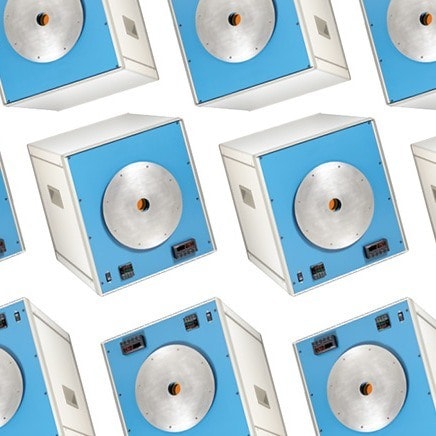Choosing a temperature sensor for your application can be an overwhelming task. The current range of sensors in the market is broader than ever, and it is easy to feel lost if you are not familiar with calibrations.
This article is here to explain the differences between the three main kinds of temperature sensor: thermocouples, RTDs and thermistors. After reading it, you will understand the pros and cons of each type and how to identify them.
With this new knowledge, you will then be able to choose the most suitable type of temperature sensor for your application.
Three types of temperature sensor
Like all technologies, temperature sensors have evolved considerably over the years. Today, three core types are used across industry.
Thermocouples
A thermocouple uses two metal wires to produce a voltage relative to the temperature present in the junction between them. There are many specialised kinds of thermocouples – they can combine different metals to measure various characteristics and temperature ranges, and produce specialised calibrations.Read about thermocouples in more detail here.
Resistance temperature detectors (RTDs)
An RTD sensor measures temperature based on the resistance changes in a metal resistor inside. The most popular RTDs, called PT100 sensors, use platinum and have a resistance of 100 ohms at 0°C.Read about PT100 sensors in more detail here.
Thermistors
A thermistor is like an RTD, but contains a ceramic or polymer resistor instead of metal.Read about thermistors in more detail here
| Sensor type | Thermistor | RTD | Thermocouple |
|---|---|---|---|
| Temperature Range (typical) | -100 to 325°C | -200 to 650°C | 200 to 1750°C |
| Accuracy (typical) | 0.05 to 1.5°C | 0.1 to 1°C |
0.5 to 5°C |
| Long-term stability @ 100°C | 0.2°C/year | 0.05°C/year | Variable |
| Linearity | Exponential | Fairly linear | Non-linear |
| Power required | Constant voltage or current | Constant voltage or current | Self-powered |
| Response time | Fast
0.12 to 10s |
Generally slow
1 to 50s |
Fast
0.10 to 10s |
| Susceptibility to electrical noise | Rarely susceptible
High resistance only |
Rarely susceptible | Susceptible / Cold junction compensation
|
| Cost | Low to moderate | High | Low |
Comparing thermocouples, RTDs and thermistors
The suitability of each sensor type depends on your application. It is therefore impossible to say which kind is best overall. Key advantages and disadvantages of each sensor are summarised in the table below.
| Sensor type | Advantages | Disadvantages |
|---|---|---|
| Thermocouple | Temperature Range
Self-powered No Self-heating Rugged |
Cold-junction compensation
Accuracy Stability TC extension leads |
| RTD | Accuracy
Stability Linearity |
Lead resistance error
Response time Vibration resistance Size |
| Thermistor | Sensitivity
Accuracy Cost Rugged Hermetic Seal Surface mount |
non-linearity
Self heating Narrow ranges |
Typical use cases for each sensor type
I have noted several times that temperature sensor type should be selected based on your application. Many applications can be served by more than one type of sensor.
Let us conclude, then, by summarising the value of choosing certain types in various situations.
Thermocouples
Thermocouples are the most commonly used temperature sensors in industry. There are many reasons for this.- Vibration resistant: Firstly, thermocouples are the most robust sensor type. They are simple in design, making thermocouples resistant to vibrations. Read our white paper on this problem.
- Low cost: Secondly, because thermocouples are inexpensive, they are the best option when several sensors are needed in the same application. There are certain applications that used hundreds, and even thousands, at the same time. Thermal profiling in the automotive industry is one example.
- Highest temperatures: Thermocouples are the only contact sensors that can measure high temperatures. Anything that goes above 650°C requires a thermocouple probe to be measured.
- Fast response: Finally, when a fast response is needed, an exposed junction thermocouple provides the fastest feedback to temperature changes.
RTDs
RTDs also offer several unique features and benefits.- High temperatures: RTDs are suitable when accuracy is required at high temperatures, as they can measure up to 650°C. This range is much higher than thermistors.
- Electrical noise immunity: In addition to provide good accuracy, RTDs feature high immunity to electrical noise. PT100s are the best option for applications in industrial automation environments, where motors, generators and other high voltage equipment are around.
- Less affected by environment: Lastly, if the application is in a harsh environment, an RTD element’s protective casing provides good immunity from most environmental problems; especially in comparison to thermocouples.
Thermistors
Thermistors are the best option for measurements below 150°C.- Best sensitivity: On the one hand, thermistors have the best performance on that range, even better than RTDs, specially because its best sensitivity.
- Low cost: On the other hand, thermistors are 2 or 3 times cheaper than RTDs and that it is the main raison why thermistors are used in common house appliances, AC units or water heaters.
Your application
Having read this article, you should now have a much clearer idea of which type of temperature sensor is most suitable for your application.
If you still have questions, the OMEGA engineers and sales team are here to help. We can help you choose the best temperature sensor for your measuring system – contact us today.


